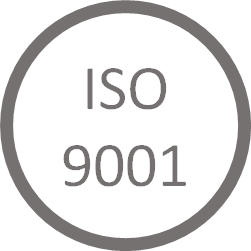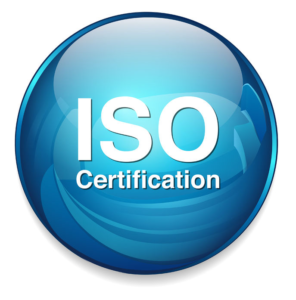Gaining Quality Through ISO 9001 Certification: Benefits and Requirements
The ISO 9001 standard is the world’s most widely recognized and implemented Quality Management System (QMS). This standard has been updated and improved several times. The 2015 version of ISO 9001 is the most comprehensive update yet. Here are some of the key changes you should be aware of:
- Risk-Based Thinking: One of the main goals of the new standard is to encourage organizations to use risk-based thinking to identify and manage risks, opportunities, and external and internal issues. This includes measuring and monitoring performance and considering future changes.
- More vital Leadership: The standard emphasizes top management's involvement in the quality management system and its implementation. This includes setting up a clear direction, showing commitment to the system, and taking accountability for its performance.
- Improved Communication: The standard requires organizations to establish and maintain appropriate communication channels with customers, suppliers, and other relevant stakeholders, such as regulatory authorities. Accordingly, improved customer satisfaction and continual improvement.
- The process approach is an alternative method of process management that replaces the traditional “sequence and interaction of processes”: This approach encourages process-based management rather than task-based management. This approach aims to focus on the interdependencies between processes to ensure that the most effective and efficient outcomes are reached.
This approach is often discussed under the headings of ‘process integration’ and ‘process improvement’, both of which aim to improve the efficiency of organizational processes. Process integration involves optimizing processes to ensure that individual functions are interconnected and aligned, reducing redundancies, and optimizing the organization’s overall functioning. Process improvement then focuses on ensuring that methods are implemented to their fullest potential and that their implementation is monitored and continually improved upon.
The process approach can be applied to any organizational process, not just the methods of a business.

- The ISO 9001 Standard is a highly structured and comprehensive Quality Management System. It consists of eight sections covering fundamental quality management principles and the requirements for a quality management system. All eight sections are equally important, as each one plays an essential role in achieving the objectives of a quality management system. Together they provide the necessary guidance and framework for organizations to implement and maintain their quality management system. They help companies have robust processes to meet customer requirements, continually improve operations, and achieve their objectives.
- More explicit requirements for product safety, usability, and regulatory requirements: The standard provides organizations with clarity on product safety and usability and assures that regulatory requirements are being adequately considered. Product safety is paramount to ensure that no unreasonable hazards to individuals or property result from using the organization’s products. Usability ensures that products are user-friendly and can be used intuitively, reliably, and efficiently. Regulatory requirements are legal requirements that the product, system, or service must comply with - these all need to be considered. By explicitly addressing product safety, usability, and regulatory requirements, the ISO 9001 standard assures organizations that these factors are addressed and managed to ensure product quality.

- Increased importance on managing external organizations: This results from the rapidly changing environment in which companies operate today. With the rise of global competition and technological advances, companies must stay competitive and up-to-date by engaging and managing other businesses for their services, goods, and expertise. This is done through developing strong relationships between internal and external partners, providing transparent communication, and establishing clear joint objectives. This partnership allows companies to benefit from new ideas, resources, and networks, keeping them ahead of their competitors. In addition, successful external partnerships reduce operational costs and increase organizational efficiency, allowing companies to focus on their core competencies.
- Precise requirements for monitoring and measuring customer satisfaction: These are essential for any business that seeks to provide a high level of customer service. The requirements should include methods for tracking customer sentiments, such as customer surveys or feedback programs. It should also have established guidelines on how customer satisfaction data should be interpreted and used to inform decision-making. Furthermore, customer service metrics should be set to measure customer satisfaction against customer expectations. Finally, businesses should regularly review customer satisfaction data and modify their customer experience strategy. Doing so will ensure that the customer has the best experience possible and help the company maintain its competitive edge.
- Improved requirements for document control and records management: This can help to ensure the accuracy and integrity of documents throughout their lifecycle and make them easier to find, access, review, and update. Robust document control processes and records management systems can reduce legal, regulatory, and compliance review risks.
- Quality objectives are essential for ensuring that any company provides quality products and services to its customers. Companies should set specific goals and review progress on meeting these objectives regularly to maintain a high standard of work. It is also essential to check processes to identify improvement areas and implement changes that could help streamline operations and increase satisfaction. Companies should also consider feedback from customers, employees, vendors, and other stakeholders to stay ahead of any industry trends and ensure that the quality of their products and services remains excellent. By monitoring quality objectives and processes, companies can maintain a competitive edge and ensure their continued success.
These changes make the communication requirements more stringent than in previous standard versions. Organizations identify and monitor their customers' changing needs and regularly monitor and evaluate customer satisfaction. Additionally, organizations must establish effective ways of gathering feedback from customers, suppliers, and other relevant stakeholders to improve their products and services continually.

ISO 9001 is a set of international standards designed to improve the quality of businesses and products. It is recognized worldwide as the most comprehensive and widely-used quality management system. The standards ensure that companies run efficiently and produce the best quality product or services.
ISO 9001 goes beyond traditional quality assurance systems by incorporating comprehensive processes and procedures that define how a business should analyze, design, develop and implement its operations. Each process is designed to improve organizational performance and customer satisfaction, from internal audits and record-keeping to customer surveys and corrective action.
Organizations that achieve ISO 9001 certification have a competitive edge in their sector, as the certificate serves as a sign of quality and a benchmark for continuous improvement. Businesses that meet the standards must demonstrate their commitment to customer service, efficient processes, and employee motivation, ensuring that each customer receives the highest quality product or service.
ISO 9001 certification is a wise investment for companies looking to improve their operations and stand out from the competition. It gives customers the confidence that their purchase options are of the highest quality and have been developed to meet international compliance standards.


